Exploring Animated Cards in Hearthstone: Enhancements to Gameplay and Aesthetics
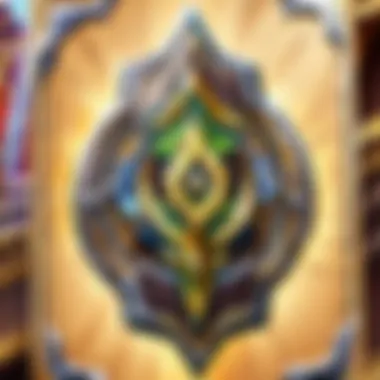
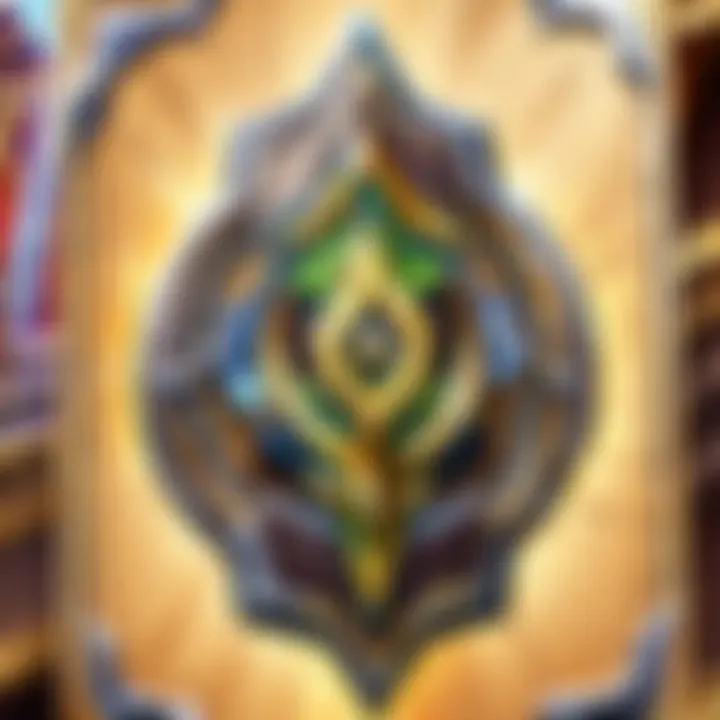
Intro
In the world of digital card games, aesthetic elements play a crucial role. Hearthstone, developed by Blizzard Entertainment, stands out with its animated cards, which have added depth and charm to the overall experience. These cards enhance the game's visual quality, transforming the player's interaction with mechanics and strategies. The purpose of this article is to explore the intricacies of animated cards in Hearthstone. We will look at their evolution, gameplay significance, and community effects, together with the relevant technology that supports them.
With a focus on how these animated cards influence player choices and strategies, this guide provides insights for beginners and veterans alike. Understanding the animated cards not only enhances gameplay but also enriches appreciation of the overall design and community engagement in Hearthstone.
Game Updates and Patches
Overview of the Latest Game Updates and Patches from Hearthstone
Hearthstone receives regular updates and patches that impact all aspects of the game, including animated cards. These updates not only introduce new cards but also refine existing mechanics, ensuring that the game remains balanced and engaging. Notably, recent patches have seen enhancements in animation fidelity, providing sharper visuals and improved responsiveness in gameplay. This has a dual effect: it enhances the aesthetic appeal while also solidifying the strategic implications behind each animated card.
Detailed Breakdown of Changes and Its Impact on Gameplay
With each update, the repercussions on gameplay can be substantial. For instance, the introduction of key animated cards such as Book of Specters and Fungalmancer in the recent expansions have shifted deck strategies. These animations contribute to the feel of summoning powerful allies, heightening the emotional investment during play.
Players often adapt their strategies based on card interactions and animations. The changes from updates prompt players to re-evaluate their decks, making the experience more dynamic.
Analysis of New Cards and Mechanics Introduced
The new cards introduced with every expansion often come with unique animations that set the tone for their effects. For example, Shimmering Candles features dynamic light effects that create a sense of urgency during draws. These animations are not just for show; they also serve to communicate critical information about the card's effects, thus assisting players in making strategic decisions during intense matches.
Deck Strategies and Meta Analysis
Top Deck Recommendations for Different Play Styles and Skill Levels
Due to the ongoing changes in Hearthstone’s environment, it's essential to regularly update deck recommendations. For players new to animated cards, utilizing straightforward decks like Aggro Priest or Face Hunter can be advantageous. For skilled players, incorporating unique animated cards can lead to surprising gameplay experiences.
Insight into the Current Meta and Popular Deck Archetypes
The current meta showcases diverse strategies, with animated cards often appearing in popular deck types such as Control Warlock and Combo Druid. These archetypes successfully utilize the synergy between card animations and gameplay effects, showcasing how visual elements interact with mechanial gameplay.
Strategies for Countering Popular Decks and Tech Choices
Understanding animated cards goes beyond just familiarizing oneself with gameplay; it involves recognizing how to counter popular strategies. Cards like Libram of Justice feature animations that are more than visually appealing—they can change the tempo of a game. Employing cards that have effective counter animations becomes crucial for gaining the upper hand in strategic encounters.
Card Reviews and Set Reviews
In-Depth Reviews of New Cards and Their Potential Impact on the Meta
When Hearthstone releases new expansions, animated cards usually take center stage. Cards like Rancid Blackhand or Reckless Diretroll provide not only strategic advantages but also unique animations that illustrate their thematic essence. Understanding these impacts requires a keen analysis of their placement within existing decks.
Evaluations of Card Synergies Within Different Deck Archetypes
In evaluating animated cards, the connections between them and their archetypes prove illuminating. Card synergies, exemplified by animated cards like Malygos, enhance strategic play. The interaction among cards, influenced by their animations, shows the depth of gameplay not initially considered by newer players.
Set Reviews Focusing on Value, Versatility, and Competitive Viability
Set reviews are vital for assessing the overall contribution of animated cards. Their versatility often determines competition viability. Cards like Crimson Hothead are visually impressive and strategically rich, demonstrating a balance between form and function that players must appreciate.
Player Guides and Tips
Beginner's Guides to Understanding Core Game Mechanics and Strategies
For new players, grasping the fundamentals of Hearthstone is essential. Animated cards may overwhelm at the start, but understanding their role simplifies gameplay. Resources available on platforms like Reddit and Facebook offer beginner strategies focused on card usage.
Advanced Tips for Improving Gameplay and Decision-Making
As players mature, recognizing how to leverage animated cards becomes necessary. Advanced players focus on timing their card plays for maximum visual and mechanical effect. Watching streams or guides from seasoned players can provide insight into these more intricate strategies, enhancing the understanding of animated cards.
Arena Drafting Strategies and Arena-Specific Gameplay Tips
Animted cards in the arena have specific impacts on drafting strategies. Knowing which cards offer high-value plays can determine success or failure. Drafting visually striking cards is not just a choice of aesthetics, but part of a calculated strategy that should reflect the card’s mechanics across multiple games.
Understanding and maximizing the potential of animated cards in Hearthstone transforms the player’s experience, enhancing both strategic depth and visual engagement.
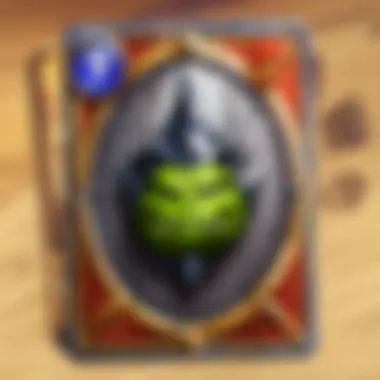

Prolusion to Animated Cards
The advent of animated cards in Hearthstone signifies a pivotal development in both the gameplay and aesthetic aspects of the game. As a popular digital card game, Hearthstone has consistently sought innovative features that not only engage players but also enhance their overall gaming experience. Animated cards serve this dual purpose by adding visual dynamism to gameplay.
Historical Context
Animated cards have evolved significantly since the game's inception in 2014. Initially, Hearthstone relied on static images to convey the unique traits of each card. Over time, the introduction of animations allowed for a richer representation of card abilities, enhancing the narrative within the game. The implementation of animated cards wasn't merely a cosmetic upgrade; it was a response to player demands for a more immersive gaming experience. As Hearthstone expanded its card library, developers recognized that adding animations could help players better understand the mechanics behind their favorite cards.
In this historical context, Blizzard Entertainment, the creator of Hearthstone, has frequently pushed the boundaries of animation technology. Expanding beyond simple movements, animations evolved to include elaborate effects that mirrored the card’s thematic elements. This allows for deeper engagement and offers players an immediate visual cue about a card's function.
Purpose and Functionality
The purpose of animated cards extends beyond mere aesthetics. They serve important functionalities that can alter how players perceive and utilize their cards. For instance, the visual cues provided by animations can lead to quicker decision-making. When a card animates upon being drawn or played, it captures the player's attention, reinforcing its significance within the game context.
Moreover, animations can signify card rarity and power levels. Cards with rare or epic statuses often feature more elaborate animations, which not only enhances their aesthetic appeal but also creates a sense of accomplishment when played. Additionally, as players navigate various game mechanics, animated cards can enhance clarity on complex interactions.
Here are some key points about the purpose and functionality of animated cards:
- Immediate Recognition: Animations help players quickly identify the capabilities of a card.
- Enhanced Engagement: Visually dynamic cards tend to captivate players, making the game more enjoyable.
- Strategic Depth: Differentiation in animations aids in building a strategy around the perceived power of cards.
"Animations are essential for maintaining player interest and making gameplay more engaging. They represent not just cards, but the stories behind them."
In summary, animated cards in Hearthstone represent a crucial evolution in gameplay design that balances both aesthetics and functional relevance.
The Technology Behind Animated Cards
The role of technology in the development of animated cards in Hearthstone cannot be overstated. Understanding this aspect is essential for grasping how these features enhance gameplay and aesthetics. Advances in animation techniques, rendering processes, and performance optimization contribute significantly to the overall experience of players. Each of these elements serves a purpose, not only in creating visually stunning cards but also in ensuring a smooth gaming experience.
Animation Techniques
Animation techniques underpin the visual dynamism that animated cards bring to Hearthstone. These techniques involve the use of frame-by-frame animation, vector-based animation, and also motion graphics. Frame-by-frame animation allows for detailed movement, while vector-based techniques offer scalability without loss of quality.
The implementation of various techniques provides diversity in the animation of cards. For instance, some animations may illustrate a spell being cast or a character's idle movements. These techniques engage players and elevate the storytelling aspect of the game.
Moreover, the fluidity of these animations is crucial. They should not only be eye-catching but also easy for players to follow. This enhances the cognitive processing for players, allowing them to focus on strategies rather than getting distracted by the visual elements.
Rendering Processes
Rendering processes dictate how animated cards are visually presented during gameplay. This involves translating the designed animations into the final visual output on players' screens. Several factors are involved in rendering, including texture mapping, shader application, and real-time rendering techniques.
Maintaining high-quality graphics while ensuring quick load times is a tricky balance. Optimization in rendering processes allows the game to run smoothly even on devices with limited hardware capabilities. Effective rendering processes contribute to an immersive gaming experience, where players can appreciate the intricacies of each card's animation without technical hindrances.
Performance Optimization
Performance optimization is vital in ensuring that animated cards do not disrupt the overall gameplay. As animated cards add complexity, developers must focus on reducing lag and preventing slowdowns. Optimization techniques include minimizing file sizes, streamlining rendering algorithms, and effective asset management.
Players notice the effects of efficient performance optimization through smoother transitions between actions. Lack of performance issues keeps players in the game, allowing for deeper engagement and strategic play. It is crucial for maintaining fairness in competitive scenarios, where timing can dictate the outcome of a match.
Overall, the technology behind animated cards is a robust framework that supports both fun and functional aspects of Hearthstone. The careful integration of animation techniques, rendering processes, and performance optimization enhances gameplay and keeps players coming back for more.
Types of Animated Cards
Understanding the types of animated cards in Hearthstone is essential for comprehending their impact on gameplay and visual aesthetics. Animated cards serve multiple functions, from enhancing game immersion to shaping player strategies. Each type of animation caters to specific design and gaming needs, offering unique benefits that elevate the gaming experience.
Static vs. Dynamic Animations
In the realm of animated cards, the distinction between static and dynamic animations plays a crucial role. Static animations, as the name suggests, refer to simple effects that trigger under specific conditions, such as hovering over a card or following certain actions in the game. These animations are generally subtle and serve to provide feedback without interrupting the flow of gameplay.
On the other hand, dynamic animations are more elaborate and can significantly influence gameplay. These animations react in real-time based on player actions or game events. For example, a card might exhibit an intricate animation when played or upon dealing damage. This not only engages the player but also adds a layer of excitement to the game.
Players often find that dynamic animations enhance their connection to the game. The visual feedback they provide can help in understanding game states better and can also motivate players through thrilling display effects.
Benefits of Static vs. Dynamic Animations
- Static Animations:
- Dynamic Animations:
- Maintain focus on strategy;
- Offer clarity without distraction;
- Provide information on action triggers.
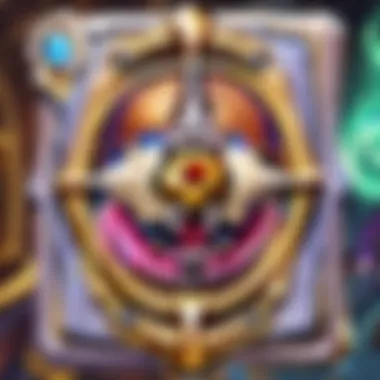
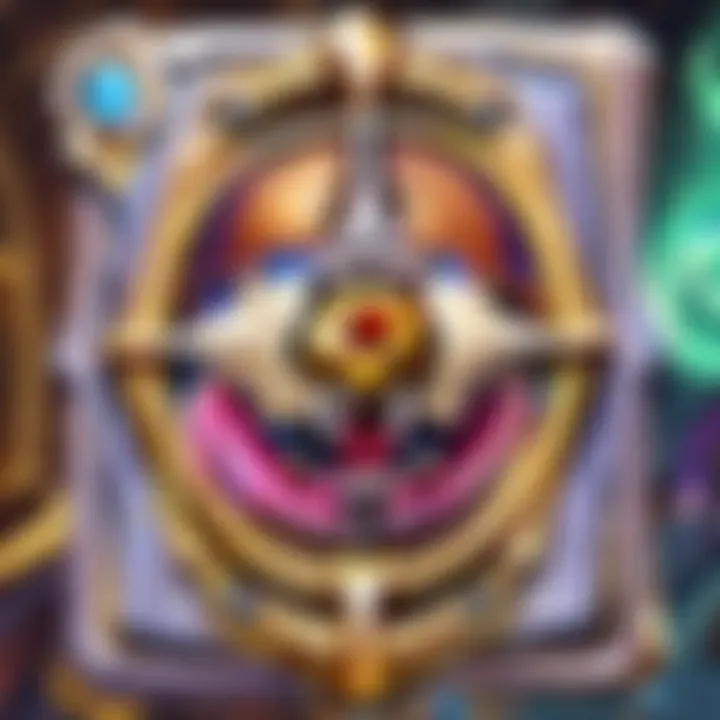
- Increase engagement levels;
- Offer a visually stimulating experience;
- Encourage emotional responses during key moments.
Effects Based on Rarity
The design of animated cards is also influenced by the rarity of the cards themselves. In Hearthstone, cards are categorized into different rarity levels—common, rare, epic, and legendary. Each rarity comes with its own set of expectations in terms of visual presentation and animation complexity.
Legendary cards often feature unique animations that showcase their special status. These animations are typically more flamboyant and eye-catching, signifying the card's power and unique abilities. Common and rare cards, while they may possess animations, are generally less complex, focusing instead on clarity and functionality.
This differentiation not only helps players quickly assess the cards during gameplay but also adds an element of exclusivity. Players may feel a sense of accomplishment when acquiring a rare or legendary card, as the animated features serve as a visual representation of their achievement.
Event-Specific Cards
Event-specific cards are another fascinating type within the animated card ecosystem. These cards are typically released during specific in-game events or seasons, such as Halloween or expansion launches. Their animations are often themed to align with the event, making them stand out against regular cards.
Customization in animations for these cards can enhance the player experience. For example, an event-specific card may have animations that reflect the holiday spirit or game lore, capturing the essence of the event. This appeals to players who enjoy seasonal changes in gameplay and aesthetics.
Quote: "Event-specific cards foster a sense of community engagement and excitement, as players look forward to new content tied to their favorite occasions."
In summary, the varied types of animated cards in Hearthstone—whether static or dynamic, influenced by rarity, or designed for specific events—contribute significantly to both gameplay and aesthetic values. Understanding these distinctions helps players navigate the game more effectively and appreciate the thoughtfulness behind each card design.
Influence on Gameplay Mechanics
The influence of animated cards on gameplay mechanics is a multifaceted aspect that cannot be overlooked. In the world of Hearthstone, these cards are not just visual elements; they play a significant role in how players strategize and interact with the game. Understanding this influence helps players appreciate the complex layers of decision-making involved in their gameplay.
Strategic Implications
Animated cards can have profound strategic implications. Their dynamic visuals can draw attention and shift player focus during critical moments. For example, a powerful spell card with a stunning animation may create a psychological impact on the opponent. This could lead to mistakes or misjudgments in their counterplay. Furthermore, the animation of these cards can signal different game phases, subtly informing players of the proceedings without explicit communication.
Here are some points to consider when analyzing these implications:
- Psychological Impact: Players may react differently to animated sequences, impacting their confidence or indecision.
- Attention Allocation: Bright, animated elements can distract players, affecting their strategic assessment.
- Game Flow Signals: Animations that denote card strength or weaknesses can guide players in making split-second decisions.
Player Decision Making
Player decision making is intricately tied to animated cards. The way a card animates can influence the choices a player makes during their turn. Considerations such as timing, sequence of plays, and interaction with opponents can all be affected by the animations present.
To delve deeper into this:
- Timing: Animated effects can make players hesitate or rush decisions depending on how long an animation takes.
- Sequence Awareness: Players might remember previous interactions with similar animations, impacting their current game strategy.
- Feedback Mechanisms: Instant animations provide quick feedback, influencing whether players feel satisfied or frustrated with their choices.
Interactive Elements
The interactive elements that animated cards introduce further enhance gameplay mechanics. The cards do not just sit idly; they engage players on a deeper level. Well-crafted animations can encourage players to experiment and try new strategies, knowing that the visual feedback will make their experience more enjoyable.
Here are some key points regarding interactive elements:
- Engagement Through Interactivity: Players get more invested when their actions yield responsive animations.
- Dynamic Responses: Situational responses to player choices can lead to more immersive experiences.
- Variety of Interactions: Different animated cards can lead to wider varieties of gameplay, enhancing replay value.
Animated cards connect the strategic depth of gameplay with aesthetic pleasure, ultimately enriching the Hearthstone experience.
The importance of animated cards in gameplay mechanics is evident. They reshape how players think, decide, and interact through engaging visuals and responsive actions, emphasizing the need for players to be mindful of how these elements impact their overall strategy.
Visual Appeal and Aesthetic Contribution
The visual appeal of animated cards in Hearthstone is significant because they contribute not only to the game's aesthetic but also to the overall gameplay experience. The animations create an engaging atmosphere for players, enhancing their emotional investment in each match. Each animated card reflects the spirit of the game — vibrant, dynamic, and full of personality. These visuals can invoke excitement, fostering a deeper connection between players and the game.
Artistic Design Considerations
Artistic design is a core element in creating animated cards. The design process involves careful consideration of color schemes, character detailing, and animation fluidity. Each card's artwork must harmonize with the existing game art while standing out to attract player attention.
- Color Usage: Colors impact mood and perception. Different card types utilize color schemes to convey their function. For example, aggressive cards often employ warmer colors.
- Character Art: Characters displayed on the cards present unique identities and backstories. Their designs need to resonate with the lore of Hearthstone, creating a more immersive experience.
- Animation Smoothness: The animations should flow seamlessly. Clunky or jerky movements can break immersion and frustrate players.
User Experience Factors
User experience is greatly enhanced with animated cards. They provide visual feedback during play, helping players gauge state changes. For example, when a player plays a powerful spell card, its animation can signal a significant strategic impact. This not only benefits gameplay clarity but also heightens expectations.
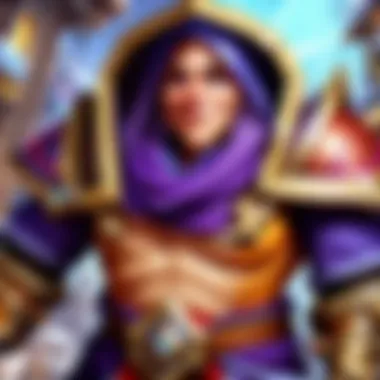
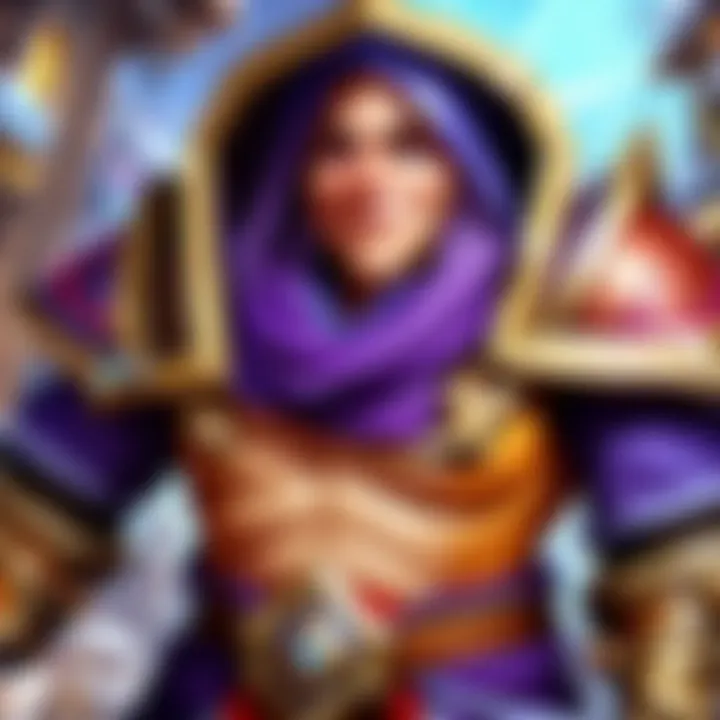
- Visual Cues: Strong animations act as visual cues, notifying players of actions taken. This clarity prevents confusion in fast-paced matches.
- Interactivity: Certain cards can have interactive elements where animated responses increase player engagement. Animate effects that react to specific game events keep players invested in the interaction.
Influence on Game Immersion
The immersive quality of Hearthstone's animated cards is undeniable. They elevate the emotional and thematic depth of gameplay, embedding players deeper into the game's universe. Animations play a role in establishing a connection with the game's narrative, drawing players into the world of Warcraft.
- Narrative Contribution: Each animated card has a story to tell. This storytelling aspect can stir emotional reactions in players, adding to their experience.
- Atmospheric Enhancement: The animations contribute to a cohesive atmosphere. During gameplay, flashy effects and smooth transitions create a captivating environment.
"Animations hold a special place in player hearts as they transform card interactions into an art form, beyond mere tactical moves."
Community Response and Feedback
The introduction of animated cards in Hearthstone elicited significant feedback from the community. Players began to express their thoughts and opinions, which influenced the evolution of these cards. Community response is essential as it reflects how well the game aligns with players’ expectations and preferences. Understanding these sentiments not only helps in shaping future updates but also enhances player satisfaction.
Player Engagement Levels
Animated cards have a direct correlation with player engagement levels. Initially, many players were drawn to the visually striking designs and lively animations. This feature not only captivated newcomers but also rekindled interest from veteran players. The animations serve as visual rewards that lead to longer gaming sessions. As players interact with cards that possess unique animations, their emotional investment in the game grows. This heightened engagement manifests in an increase of discussions on platforms like Reddit and Facebook.
- Greater immersion: Players are more likely to feel invested in matches when they can see the impact of their decisions through animated effects.
- Increased interaction: Players often share their favorite animated cards, leading to vibrant discussions and exchanges of strategies.
- Retention of players: Engaging visuals can contribute to retaining players who might otherwise lose interest over time.
Competitive Scene Perspectives
In competitive Hearthstone, the use of animated cards introduces both advantages and challenges. Some players see animated cards as a strategic asset. For example, the animations can distract opponents or create an emotional response that influences decision-making. However, others express concerns regarding the animations potentially leading to delays during gameplay.
The competitive context necessitates balance. Developers continuously seek feedback to ensure that animations enhance rather than hinder gameplay. This back-and-forth creates an evolving dialogue with the player base, focusing on the nuances of animated cards in high-stakes environments.
"Animated cards represent the fine line between giving personality to cards and keeping the competitive integrity of the game."
Social Media Impact
Social media platforms have played a crucial role in shaping opinions about animated cards. Players regularly post clips showcasing their favorite animations, contributing to a vibrant online culture dedicated to Hearthstone. This sharing of content keeps the community active and engaged. Furthermore, it allows developers to gauge community sentiment and preferences effectively.
The dynamics on platforms like Twitter and Facebook enable:
- Rapid feedback loops: Developers can quickly understand player concerns or praise regarding specific animated cards.
- Community building: Fans can unite over shared experiences and express their enjoyment or dissatisfaction through discussions.
- Trend monitoring: Animated cards that gain popularity can generate discussions on prospective designs, fostering creative ideas for future expansions.
By analyzing these interactions, developers can respond accordingly, often leading to adjustments in future card releases. In summary, the community response shapes the success and direction of animated cards in Hearthstone, highlighting their significance in player engagement, competitive dynamics, and social media interactions.
Future Trends in Animated Cards
The world of animated cards in Hearthstone is constantly evolving. This evolution is driven by the pursuit of enhancing both gameplay and aesthetics. Understanding future trends in animated cards is essential for players and developers alike. It offers insights into potential changes and innovations that may redefine the overall gaming experience. The integration of advanced technology and community feedback will be pivotal in shaping these trends.
Potential Innovations
As technology continues to advance, Hearthstone may embrace new innovations in animated cards. One exciting prospect could be the use of augmented reality. This technology can create immersive experiences that blend the digital with the real world. Players could interact with the virtual cards in a more tactile way, enhancing their emotional investment in the game.
Another innovation could involve personalized animations based on player behavior. For example, a player's win streak might trigger unique visual effects on their cards. Such innovations would not only promote player engagement but also add layers of strategy, as players could tailor their card appearances to reflect their gaming style. Furthermore, AI-generated animations may enable developers to quickly create high-quality content, ensuring a steady flow of fresh and dynamic card designs.
Integration with Game Mechanics
Another important aspect of animated cards is their integration with game mechanics. Future updates could see animations that change in response to gameplay decisions. For example, a card's appearance might evolve as its effectiveness shifts throughout a match. This would inform players visually about the card's current status and increase their strategic depth.
Moreover, incorporating sound effects that synchronize with animations can elevate the player's experience. For instance, a powerful spell card might unleash a visual explosion alongside a dramatic sound, visually reinforcing its significance. By aligning animations with game mechanics, developers can create an intuitive feedback loop that enhances the clarity and enjoyment of the experience.
Long-term Community Trends
The community surrounding Hearthstone plays a crucial role in influencing future trends. As animated cards become a more prominent feature, player feedback will shape their development. Emerging platforms such as Reddit and Discord provide spaces for players to share opinions on animations. This engagement ensures that developers remain aware of community preferences and trends.
Additionally, as players grow more sophisticated in their understanding of gameplay mechanics, expectations will evolve. Players may demand more than simple visual upgrades; they may seek complex animations that tell stories or provide emotional depth. The success of animated cards could hinge on how well developers balance aesthetic innovation with gameplay requirements, creating a product that caters to both visual appeal and strategic depth.
The future of animated cards in Hearthstone holds many possibilities that extend beyond mere visuals. It's about combining technology, gameplay, and community into a cohesive experience.
Closure
The exploration of animated cards in Hearthstone provides key insights into how these features shape player experiences and gameplay. These cards are not mere aesthetic enhancements; they serve multiple purposes that enhance the overall gaming landscape. From their origins in design to present innovations, animated cards reflect a balance between enhancing gameplay and visual appeal. Understanding this balance is crucial for grasping the broader implications for players and the Hearthstone community.
Summary of Findings
Analysis reveals several critical aspects of animated cards:
- Historical Importance: Animated cards have evolved significantly, influencing both design and gaming dynamics.
- Technological Advances: Techniques and processes behind the animations have improved performance and player engagement.
- Impact on Strategy: Players consider animated cards in their decision-making, as these cards can affect gameplay mechanics.
- Community Dynamics: Feedback from players highlights how animated cards foster community interaction, influencing their perception of the game.
The investigation into these findings underscores the practical and emotional roles that animated cards occupy in Hearthstone, illustrating their contribution to game evolution.







